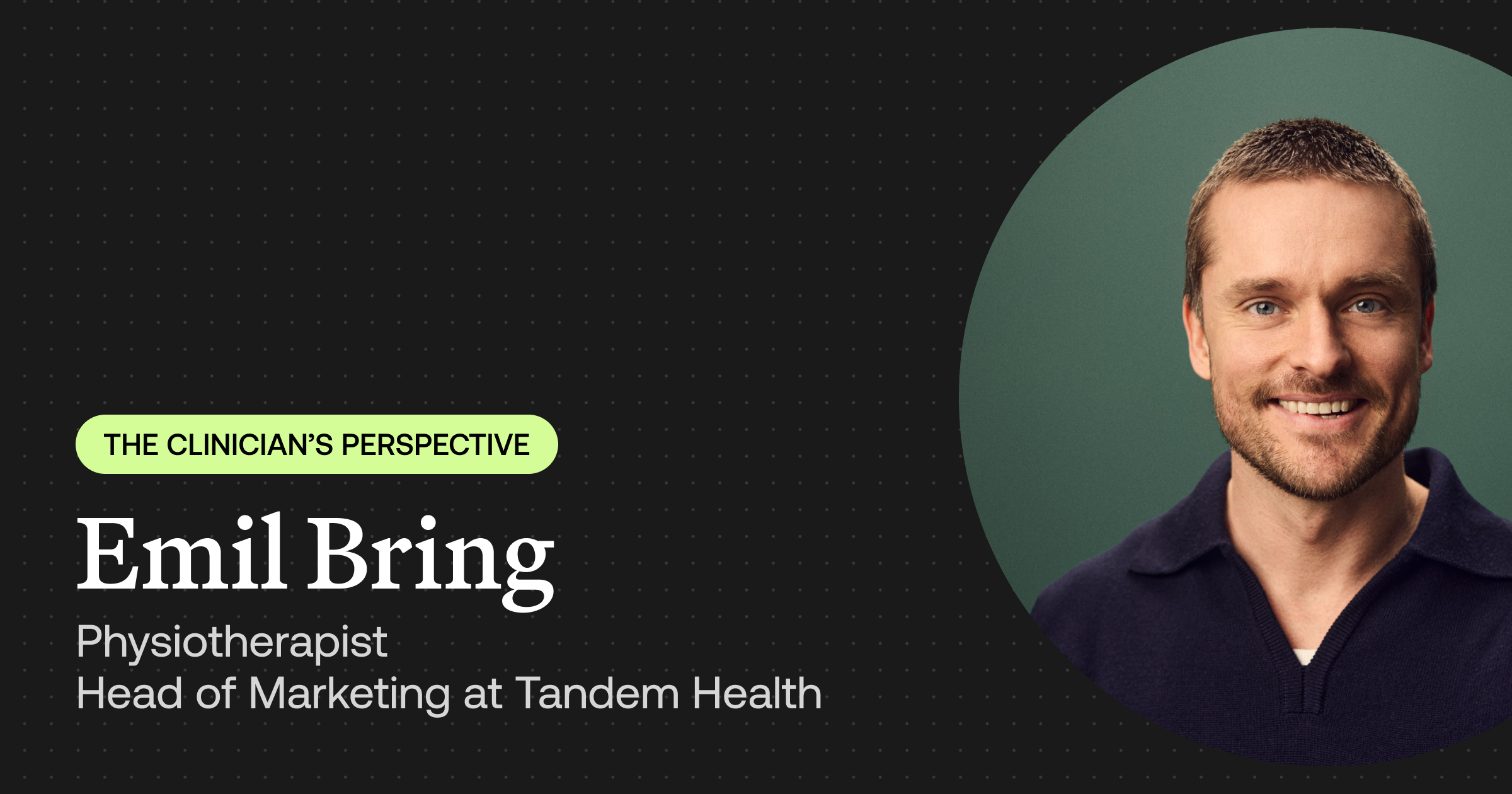October 30, 2025
November 12, 2025

This article is part of our series, The Clinician’s Perspective, where we explore the intersection of AI and healthcare through the eyes of our team – former clinicians who understand the realities and complexities of patient care first hand.
Another physiotherapist once told me the hardest part of his job wasn’t the patients or the treatments. It was the documentation.
He said the hardest thing wasn’t even the time it took. It was trying to remember every detail from the patient’s story. What they said that mattered. What didn’t. The findings from the physical exam. Every little thing that needed to be written down before it slipped away.
By the end of the day, he felt drained. Not from helping people, but from ticking boxes in the electronic health record. Making sure nothing was missed.
I remember nodding. Because I felt exactly the same.
Early in my physio career, I decided that if I couldn’t escape admin, I’d master it.
I cared about the quality, but I also wanted to work smarter. I wanted to finish on time and still have notes I could stand by. It allowed me to see more patients in a day (and honestly, that was good for performance reviews too).
I learned every keyboard shortcut, built my own templates, memorized the ICD codes I used most. I even had a post-it on my monitor with the top ten I needed almost every day.
That made me faster, sure. But it also changed how I worked with patients.
Anyone who’s done mobility or function assessments knows how much detail there is to capture. Range of motion. End feel. Pain. Side-to-side differences. Palpation findings. It’s a lot. If you don’t write it down right away, it disappears.
So I started documenting immediately after the exam while everything was still fresh in my head. The problem was that it pulled me away from the patient. I’d be typing while they were still talking. And sometimes, I missed something important they said.
I created my own structure in the free text field with sections for mobility, function, pain, and assessment. It worked for me, but it didn’t always fit the standardized system everyone else used. My notes were easy for me to read but not so easy for others to scan quickly. It was always a balance between speed, clarity, and structure.
Physiotherapists spend so much time documenting that sometimes it feels like the job is half paperwork, half care.
Tandem’s Time to Care report found that 75 percent of clinicians say documentation takes too long, and nearly two-thirds say it hurts the patient interaction. Swedish data shows that doctors spend more than five hours a week doing unpaid overtime just to finish their notes. And in almost every study, admin overload is one of the biggest reasons for burnout.
So it’s not only about time, but the energy. Every minute spent cleaning up a note or finding the right code is energy taken away from the person in front of you.
You start to feel like your head is split in two. One half with the patient. One half inside the record (and yes, that wears you down over time).
When I think about how AI could help physiotherapists, I don’t picture robots doing the treatment or analyzing movement patterns. I think about the small, quiet help that would make the day smoother.
Imagine a silent assistant in the room. Listening. Capturing the right details from the conversation. Filtering out what doesn’t matter. Then organizing it all neatly under the right headings in the record.
Mobility, left hip: slightly reduced with soft end feel, no pain.
Mobility, right hip: more limited, roughly 100 degrees, with mild pain at end range.
Palpation: tenderness over greater trochanter, probably unrelated to the main complaint since the patient said they bumped into a door earlier.
It would still be your language and your findings. Just written down for you, in the right place.
You’d still review everything. But that constant tension of “Did I document that?” would be gone.
AI doesn’t need to take over our work. It just needs to give us the breathing space to do it properly.
The best documentation tells the story of the patient, not the stress of the clinician writing it.
If AI can help us capture what matters clearly and in our own words, we could finally get back some of the attention and calm that should define good care.
I think about that colleague who once told me the hardest part of his job was the documentation. Given the advancements of AI in healthcare, that doesn’t need to be true anymore. I hope he’s adopted it into his work.
Emil started out as a physiotherapist, working in hospitals, primary care, and sports medicine, before finding his way into tech and marketing. Along the way, he worked in data and product roles at various technology companies, learning how tech can solve real problems when it’s built with empathy.
Today, he leads Tandem Health’s marketing efforts, blending his background in healthcare and technology to make AI feel more human and grounded in care.
Les mer
Bli én av flere tusen klinikere som benytter seg av stressfri dokumentasjon.